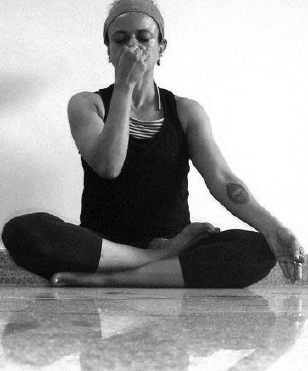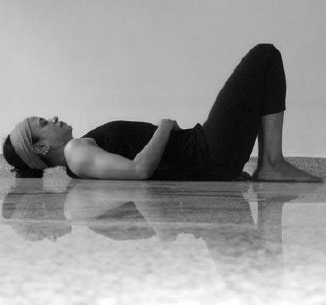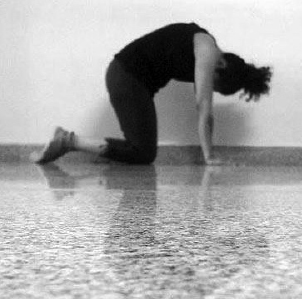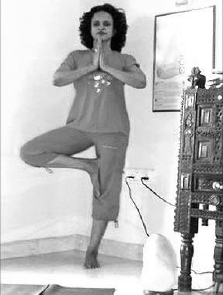Dancing with Life (14 page)
Authors: Jamuna Rangachari

Organic foods
Though it has been well established that organic foods are much better for health, the idea of spending a little more money for it is something we hesitate to do. I strongly recommend people to go in for organic foods, especially those with serious health problems.
It is not that I obsess over my diet. I do not eat all of these things every day, but do try and incorporate them regularly in my diet. I do eat out and indulge myself in all kinds of food, but am aware of what is good for me and never overeat.

At this stage, I would also like to share some details of some diets that I have read about and am influenced by:
Dr Roy Swank’s Diet
Dr Roy Swank
1
was a neurologist who started considering that diet might play a role in healing MS sixty years ago and some people have benefited from it.
Swank low-fat diet: Guidelines for MS
- Saturated fat should remain less than 15 grams per day
- Unsaturated fat should be approximately 20-50 grams per day
- No red meat should be consumed during the first year
- After the first year, a maximum of 3 oz. of red meat per week is allowed
- Dairy products must have 1 per cent butter fat or less
- Processed foods containing saturated fat should not be eaten
- A source of Omega-3 fatty acids, a multivitamin and a mineral supplement are recommended daily
- Wheat, gluten or dairy product quantities are not restricted, unless they cause allergies or reactions
Dr Terry Wahls’s Diet
I like to follow the diet recommended by Dr Terry Wahls for she herself was diagnosed with MS in 2000. She has adopted the nutrient-rich paleo diet.
The paleo diet seeks to mimic the diet of preagricultural foragers. The Paleolithic diet consists of foods that can be fished and hunted such as seafood and meat. The diet also includes foods that can be gathered such as eggs, fruits, herbs, insects, mushrooms, nuts, seeds, spices and vegetables. The meats recommended for consumption are preferably free of food additives such as wild game meats and grass-fed beef since they contain higher levels of Omega-3 fatty acids.
2
Dr Biswaroop Roy Choudhary’s Diet
Recently I also interviewed Dr Biswaroop Roy Choudhary, a medical nutritionist, and found that a seventy-year-old man with Parkinson’s disease had become better by following his dietary recommendations. As Parkinson’s is also a disorder of the central nervous system, my antennae lit up and I asked if the diet would be helpful for MS patients as well. He nodded in the positive and shared the following:
- Patients must stop consuming all kinds of non-vegetarian food as well as dairy products permanently
- Patients must reduce/avoid the consumption of whole grains for three months
- Patients must avoid refined food including refined oil, salt, sugar and packed foods
- 35 to 40 per cent of the patient’s diet should consist of fresh fruits and fresh fruit juices
- 45 to 50 per cent of the diet should be raw/ steamed vegetables. Leafy vegetables, tomato and beetroot should be specially included in the diet
As a medical nutritionist, Dr Choudhary calculates the exact amount of fruits and vegetables the patient must eat so as to get the daily recommended amount of protein, carbohydrates, calcium and other vital nutrients with reference to the United States Department of Agriculture (USDA) standards.
According to him, once the patient starts following the above diet strictly, further attacks can be totally avoided. Reasonable relief from MS will be visible within a month. He says it takes around eight months for the attacks to stop completely and after the attacks stop, the patient may adopt a little flexibility in diet. But they must avoid non-vegetarian and dairy products lifelong.
Notes and References:
1
. Roy Laver Swank and Barbara Brewer Dugan,
The Multiple Sclerosis Diet Book: Low-Fat Diet for the Treatment of MS,
Double Day Publishers, USA, 1987
2
. Terri Wahls,
Minding My Mitochondria 2nd Edition: How I Overcame Secondary Progressive Multiple Sclerosis and Got out of My Wheelchair,
TZ Press, Iowa, USA, 2010
*
Source:
http://www.overcomingmultiplesclerosis.org
*
Source:
http://www.webmd.com/food-recipes/garlic
immunity-boosting-superstar
I
N THE PROCESS OF GETTING BETTER
I
HAVE
encountered self-help techniques, many of which can be adopted easily by MS patients to get better. I am sharing them with you only after having tried them extensively on myself. Moreover, I have seen other MS patients also benefiting from these. We need to make our own routine, working on these techniques one at a time or maybe together, as our routine permits.
I hope they prove to be as helpful to the readers as they have proved for me.
YOGA
Yoga is something that I strongly advocate to anyone who wishes to get better.
As a yoga trainee in South India I was amazed and intrigued to see that yoga could be so effective to help people recover from neurological problems. No doubt the asanas or poses were a bit advanced (read difficult) and props also needed to be used; but we all want to get better even if it involves a little difficulty, don’t we?
You, however, do not need to do advanced poses. What you really need to do is relax yourself. The point is not to contort your body into difficult shapes, but to bring your mind at peace. So, don’t punish yourself too much. Just by being still, you will feel the spurt of empowerment that comes from trying to take control of your healing. This will always help speed up your healing process.
There are some ‘safe’ poses and practices that may be attempted. The emphasis should always be on form, even though certain physical conditions may prevent you from fully practising the pose. The reason for this emphasis is simple: each pose presses dramatically into acupressure points on the body. That is why, if need be, you may use a partner/therapist to assist you. Or use props that help you reach the depth of a pose. Below are a few asanas that have helped me greatly in combating MS.
Nadi shodhana
(channel purification pose):

Procedure:
Sit in any meditative pose; you can also sit on a chair. Shut your eyes. Press the index and middle fingers of the left hand down and make them touch each other. This
mudra
is called the Vishnu mudra. Use the right hand index finger and thumb to control inhalation and exhalation.
Inhale and exhale deeply a few times. Then shut your right nostril with the right thumb, inhale from the left nostril to the count of four and vice versa. The ratio may be modified to minimum of four-four-four initially, if you find the original ratio tough. But after a few weeks you may want to be able to do this, because the healing is in the ratio.
Initially do five rounds. Then slowly work your way up to ten rounds. The ratio may be modified according to expert advice.
Benefits:
A cure-all practice, this asana heals both the mind and the body. It helps calm the mind and soothes all the major glands which control bodily functions.
Apanasana
(energy-freeing pose):

Procedure:
Lie on your back as shown; with knees bent, feet touching the ground and close to the hips. Keep one hand on your stomach, and the other alongside the body.
Shut your eyes. Focus on your breathing and the rise and fall of the stomach as you inhale and exhale.
Count the breathing (count one round of inhalation and exhalation as one, and move up to the count of fifty slowly). This may even take ten minutes or more if your breathing is slow. Release the pose by moving your body gently and opening the eyes very slowly.
Done in the morning and evening, it can have miraculous effect on the body and mind.
Benefits
: Boosts breathing. Calms all the master glands in the body and helps in relaxing.
Marjariasana
(cat stretch pose):

Procedure:
Kneel on all fours. Palms should be placed straight under the shoulders. Arms should be straight. Knees can be a foot apart. Inhale; lift your head up, curving or dropping your spine downwards. Exhale; bring your head down to lock the chin between the collarbone. Arch the spine simultaneously. Do this for five to ten times.
Benefits:
Improves spinal flexibility and strength. Strengthens the entire body, including the limbs and the back and hips. It is a soft but powerful workout for the whole body. The spinal nerves are toned. This asana also reduces stress apart from improving the breathing by deepening it.
Ekapada pranamasana
(one-legged prayer pose; modified version):

Procedure:
Stand up straight. Fold the right leg at the knee. This is a softer version (if possible, you may attempt the original version, with the foot at the left thigh). Initially, if balancing on one leg gives you trouble you may lean lightly against a wall to gain confidence. Then ease yourself away from the fall in a few weeks. To complete the pose, place palms together in the prayer gesture at the chest, or overhead, extending the arms high. Keep your eyes focused on a particular point. It helps maintain balance. Do the same with the other leg. Continue breathing normally throughout.